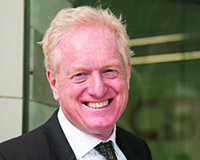 Suddenly, it seems everyone is talking about placemaking. Why? After all, it’s hardly new. It’s an age-old art, practised since well before the world thought of urbanisation.
Suddenly, it seems everyone is talking about placemaking. Why? After all, it’s hardly new. It’s an age-old art, practised since well before the world thought of urbanisation.
Since the start of this millennium, planning and property development has slowly tried to unshackle itself from the post-war obsession with futuristic models of planning. The utopia of Le Corbusier, where buildings were machines and cities were agglomerations of absurd transport systems, has been left behind. The need for planning regulation to be a form of “urban health and safety rules” for human wellbeing has been critically exposed.
We need to focus on how we all as individuals experience and perceive cities and urban areas rather than just be protected from them. We are, after all, despite bold attempts at civilisation, still governed by human instincts, as current news bulletins unceasingly remind us.
Indeed, the art of placemaking is more relevant now than ever before, due to its inextricable link to the conditions of economic growth. A simple take on the world economy could run like this: all cities are seeking to grow their economies which are now no longer driven by manufacturing or even banking, but by ideas and information sharing. As cities seek growth, investors are interested in human capital. In turn, people with ideas and knowledge demand to live, work and play in exciting, stimulating places.
The theme of our age is that at a time when people can work “anywhere” people want to work “somewhere”. Hence the challenge to our cities is that if you want growth, you need better places. If you want better places, you need to turn to the principles of Jane Jacobs and Jan Gehl.
Jacobs’ book, The Death and Life of Great American Cities was widely acclaimed when it was published more than 50 years ago, yet its messages have been largely ignored. Jacobs’ understanding of how human beings use urban space alerted us all to the failings of architects who could only relate to what they saw on their drawing boards. They lacked a true understanding or interest in the real world. We did not need to build streets in the sky when all we needed was to stay on the ground where we could feel secure in our community.
Her principles, which focussed on human beings rather than the car as the centre of importance, were conveniently buried by highway engineers and developers empowered by debt and seeking a quick return.
Fortunately things have changed since the credit crunch and more developers are backed by long-term equity. In this post-credit crunch age, investors realise that you cannot buy value; you have to create it.
If you have the long term in mind then you need to think of building on sound placemaking principles. A recent CBRE study for the RICS demonstrated that adhering to such an approach meant that even short term gain could be established as new houses sold quicker and were priced higher. In the long term the benefits are even greater.
Effective placemaking revolves around an understanding of how we as individuals react to the urban space in which we find ourselves. Architects, such as Gehl, the father of placemaking, have constantly reminded us to “look at life first and then buildings; not the other way round”.
As the government now seeks to fire up the British economy once more, it is looking at the provision of infrastructure as a way of leveraging in private sector funds. So when we look at building new railway stations, it’s not just a question of getting the engineering right. We must develop an interface with the surrounding urban fabric, which will set the conditions for further investment by other parties. This can only be done successfully if our masterplanners resist focusing on creating icons and instead consider what will appeal to each and every individual as they experience their environment. It’s this collective sense of identity which will determine how successful urban development is and how it will endure.
Stuart Robinson was head of planning at CBRE for 34 years, where he remains a consultant. He is also sole practitioner at Stuart Robinson Consultancy.










